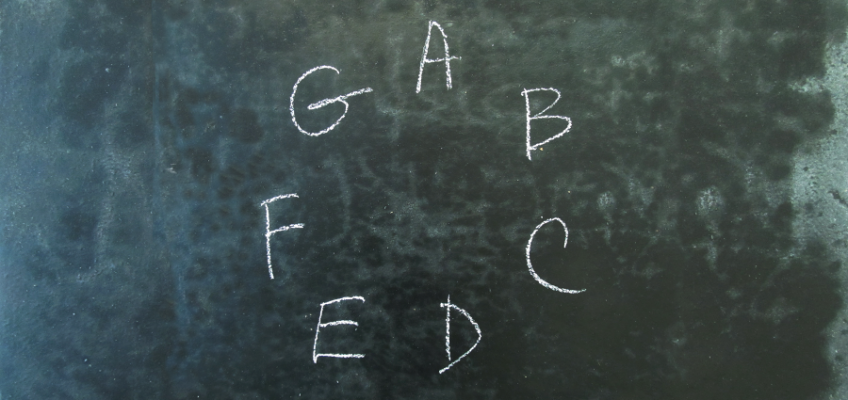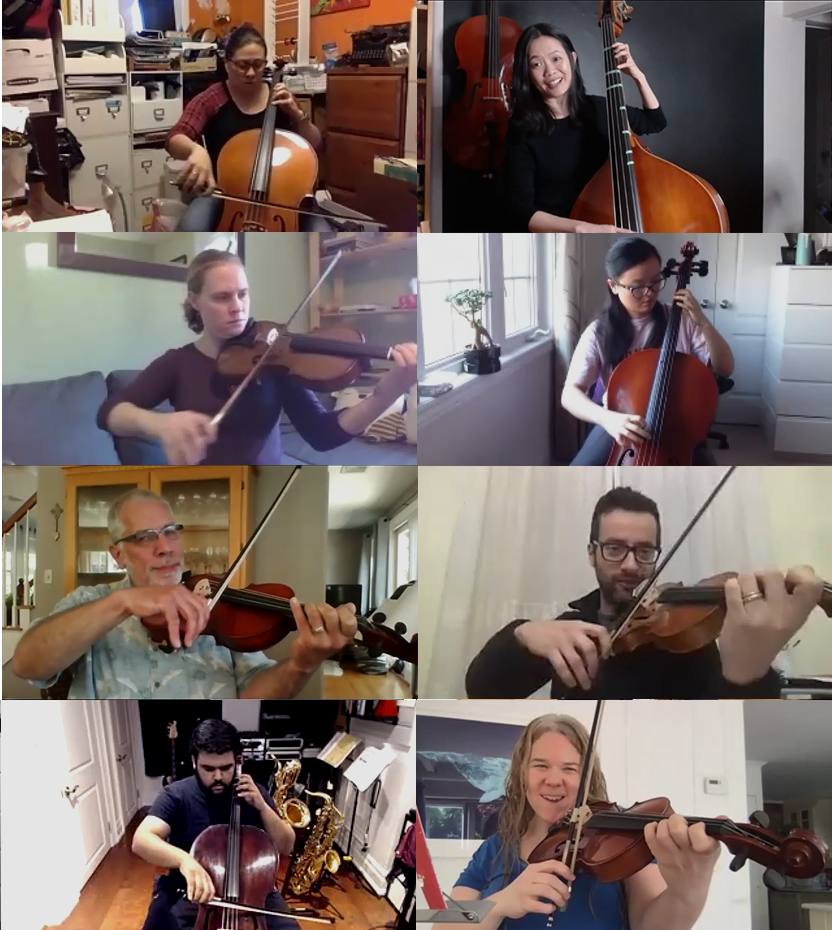Here are two quick activities that help string students get to know the notes on their instrument right away….
1. The Note Circle
Becoming fluent in the notes can be awkward for students. This simple activity is fun and easy, and helps music students (not just string students):
- start thinking about note names right away.
- become familiar with the notes of an octave.
- become fluent in saying the note names forwards and backwards.
- become fluent in thirds.
The idea is to practice starting on any note and say each letter in the circle until you get back to the note you started on, giving you an octave. For example, C D E F G A B C. Then practice it backwards starting on any note, i.e. C B A G F E D C. I quiz the students on the note circle at the beginning of every class for the first couple of weeks to make sure they are all fluent before moving onto the next step. (If you want, you can even do this exercise in thirds.)
Here is a (crappy one for now) video of the Note Circle activity:
(Applogies for the quality. I was struggling with a glitchy app. Have plans for a better video soon, but you get the idea.)
2. Naming the Notes on the Violin, Viola, Cello and Bass
Now that you have established the Note Circle, naming the notes on each instrument is a breeze. First, make sure you avoid referring to specific fingerings and refer to each note as ‘the first note on the string’, ‘the second note on the string’, etc. so that it is applicable to everyone. Then, just start on the lowest open string and start naming each note up the string in the Major Pattern. As they are doing so, they should notice that:
- each new note follows alphabetically up the string.
- the last note of each string takes you to the name of the next open string.
- the fourth note on the string is the same note as the next open string.
- naming the notes on each string is very logical.
- there is more than one way to play each note on the instrument.
When I teach then to name the notes on their instrument I also:
- get them to practice it backwards, which is more challenging, and is why we established the Note Circle first.
- introduce the idea of the 4th finger for violins and violas
- get them to find different ways to play notes with the same name, e.g. How many A’s can you find on your instrument?
- get them to spell words, e.g. A2, E3, G2 spells CAB on the violin. (E3 is the third note on the E, not the third finger, so that it applies to all the instruments.)
Again, I quiz them everyday in the beginning until I know they all understand how to name the notes on their instrument. It actually doesn’t take very long once they understand the logic of it, and it transfers to note-reading quite easily.
Have fun with it!




Leave a Reply